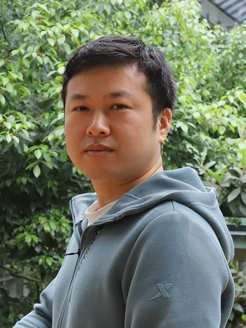Xiaolong Feng
Humboldt Fellow as of April 2024
Overview of my Research Project:

The charge density wave (CDW) is one of the most intriguing topics in condensed matter, which was first discovered in the layered transition metal chalcogenides. Although a great deal of research has been done on the CDW, it's still difficult to uncover the driving forces behind it. In one-dimensional systems, Peierls proposed that the nesting of the Fermi surface with divergent susceptibility can lead to the formation of CDW, which is also expected to be a second-order transition from metal to insulator. CDWs are also observed in many systems beyond the simple Fermi surface nesting picture in higher dimensional systems. For example, in 2H-NbSe2 there is no clear evidence for Fermi surface nesting. Instead, electron-phonon interactions play a crucial role. The correlation effect has been proposed to interpret the CDW formation in the classical 1T-TiSe2. The interplay of the charge ordering with other properties, such as superconductivity, magnetism, and chirality, has also attracted attention. For instance, electron-phonon coupling can explain both CDW and BCS superconductivity, giving rise to Fermi surface instability and gap formation. Cooper pair formation in superconductors occurs in particle-particle channels, whereas CDW is usually associated with particle-hole channels. Their transition temperatures show similar relationships with the electron-phonon coupling strength, although the transition temperature of CDW can be much higher than that of superconductivity. They can coexist or compete within the same compounds, such as TMDs and their heterostructures (e.g., 1T-TaS2) and the recent AV3Sb5 (A=K, Rb,Cs) Kagome superconductors, which can be more pronounced under external pressure. Chiral CDW states, which require the breaking of inversion/mirror symmetries, have also been reported in such transitions. Such chiral states can exhibit interesting electronic transport and optical properties.
Funded by the Alexander von Humboldt Foundation, I will focus on CDW in layered TMDs and their heterostructures (e.g., misfit) and emergent Kagome materials. I will predict possible CDW transitions and understand their driving forces. Due to the modulation of the lattice and electronic density, one can expect to capture the signal of the CDW in its phonon spectrum and charge susceptibility. Electron-phonon coupling also plays a crucial role in the transition. Meanwhile, I will also explore the possible chiral states and their interplay with superconductivity and magnetism.
The research will be carried out in the group of Prof. Claudia Felser at the Max Planck Institute for Chemical Physics of Solids under the supervision of Prof. Maia G. Vergniory. Their expertise in topological quantum chemistry can provide deep insight into the study of CDW phases and the interplay with other phases in emergent quantum materials. In addition, these predictions and understandings can be further verified through collaboration with experimentalists in Prof. Felser's group, revealing the fundamental physics in these intriguing phases.
